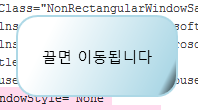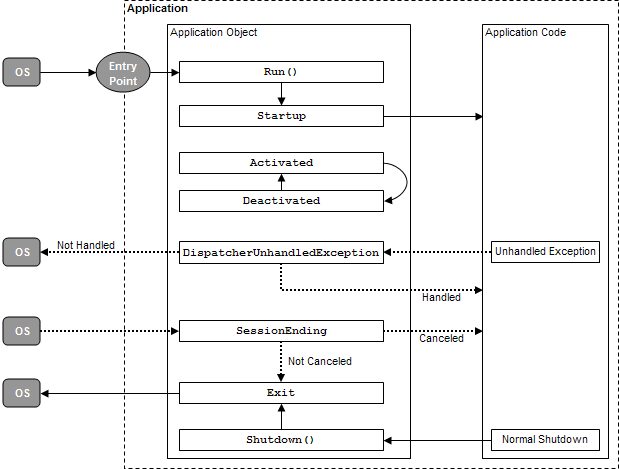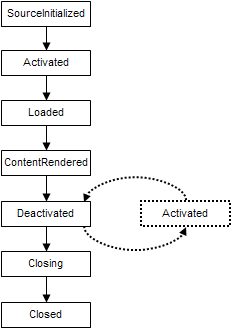오늘 작성해본 WPF에서 직사각형이 아닌 창을 나타내는 코드이다. UI 부분이므로 모든 주요 코드는 XAML에서 작성되며 드레그했을시에 창이 이동되는 이벤트 처리는 Behind Code(.CS 파일)에서 작성하였다. 먼저 XAML 코드는 아래와 같다.
창을 원하는 모양으로 만들기 위해서 반드시 설정해야할 Window의 속성은 위의 코드에서 분홍색으로 나타낸 WindowStyle, AllowTransparency, Background 속성이다. 그리고 Path Element를 이용해 원하는 모양을 그려주면 끝이다. 참으로 간단하면서도 명확하다. 실행 결과는 다음과 같다.
 드레그를 하면 창이 이동을 하는데 그와 관련된 코드는 다음과 같다. 마우스의 왼쪽 버턴을 눌렸을 경우 발생하는 이벤트이다.
드레그를 하면 창이 이동을 하는데 그와 관련된 코드는 다음과 같다. 마우스의 왼쪽 버턴을 눌렸을 경우 발생하는 이벤트이다.
void eventMouseLeftButtonDown(object sender,
MouseButtonEventArgs e) {
DragMove();
}


